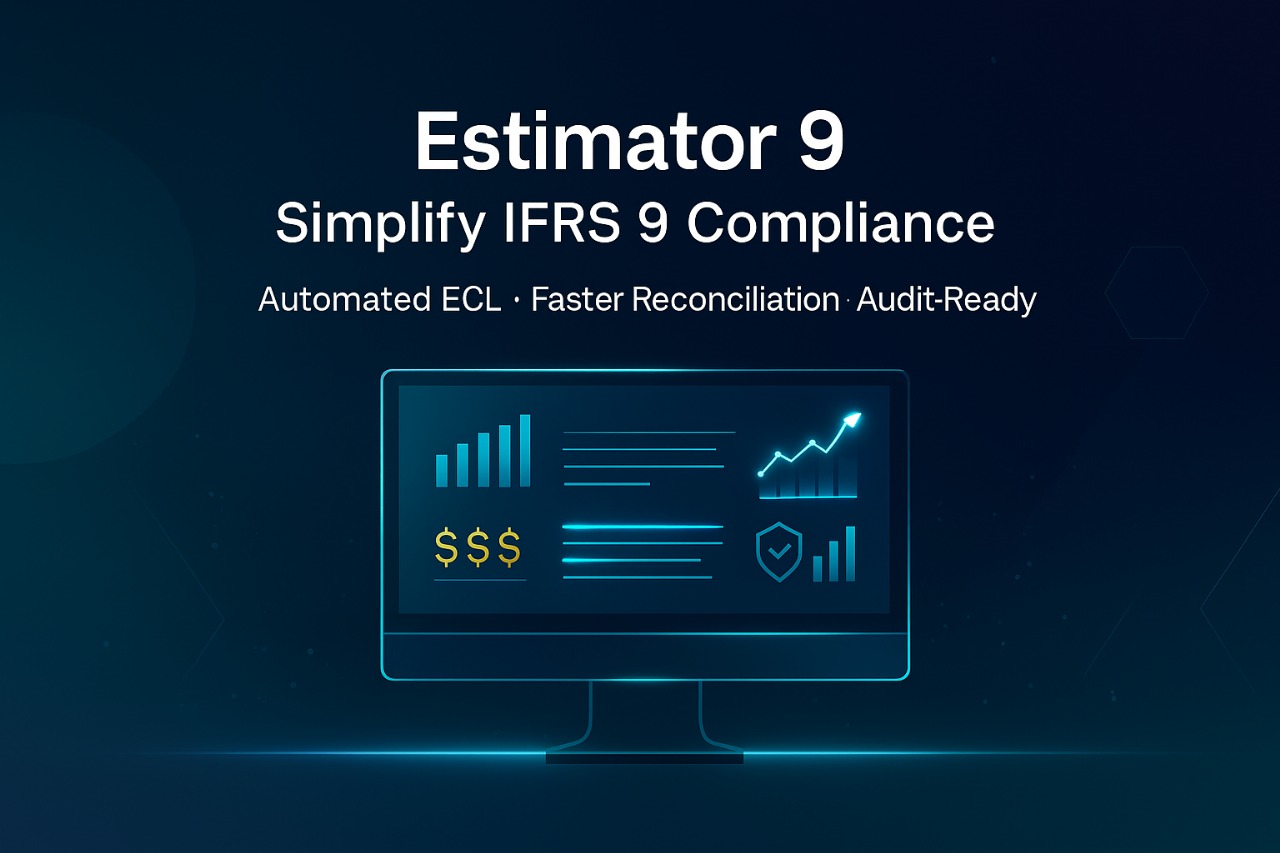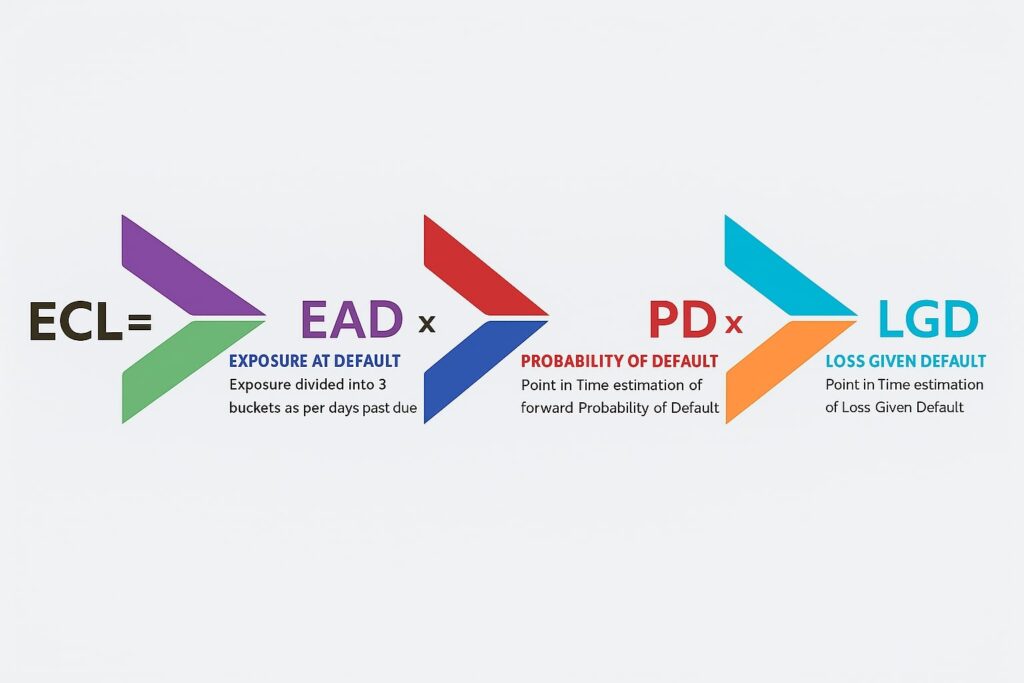IFRS 9 Compliance Made Simple
Whether you're operating under SBP, UAE Central Bank, or SAMA regulations, our powerful IFRS 9 software is built to meet your needs. Automate Expected Credit Loss (ECL) calculations, streamline financial reporting, and stay fully compliant—no matter your location. Trusted by banks and enterprises across Pakistan, the UAE, and Saudi Arabia, our solution brings speed, accuracy, and confidence to your compliance process.
Regions Available
- UAE
- Saudi Arabia
- Tanzania
- Russia
- Kyrgyzstan
- Fiji
- Pakistan
- Oman
- India
- Qatar
- Kenya

Why Choose us & Who Use Estimator 9
Accuracy
Eliminates human errors in complex calculations
Banks & MFIs
Perfect for financial institutions of all sizes
Insurance and Takaful
Protection through ethical financial coverage.
Efficiency
Reduces reporting time and operational costs
Investment Firms
Ideal for portfolio management companies
Security
Enterprise-grade data protection
Compliance Teams
Essential for regulatory reporting
IFRS 9 – BACKGROUND & METHODOLOGY
0
Post 2008 financial crisis, regulators around the world realized that history based accounting standards can be extremely misleading and a paradigm shift in accounting methodologies is needed.
0
In July 2014, IASB issued IFRS 9 standard which replaced existing IAS 39 provisioning method. The IASB stated that the IAS 39 incurred cost method leads to delayed recognition of credit losses, thus a forward looking approach is being introduced.
0
IFRS 9 became effective worldwide on Jan 2018 and has since then posed huge challenges for accounting firms, auditors and corporations who were neither used to deal with such predictive analytics nor qualified to do so.
ECL Estimation Methodology
Incurred Loss Provisioning Method under IAS 39 has been replaced by Expected Loss Provisioning Approach of IFRS 9 where provisions are taken upfront and Expected Credit Loss (ECL) is estimated as a product of EAD, PD and LGD.
Definition of EAD is different for each of 3 buckets, term structure of applicable point in time PD is also different for each of 3 buckets of EAD, and LGD is estimated differently for collateralized and non collateralized exposures.

ECL Estimation Methodology
PORTFOLIO SEGMENTATION
Segmentation & pooling of portfolio on the basis of discriminant analysis and statistical mass.
MEVS IDENTIFICATION
Identification of statistically significant macro-economic variables for each segment's default rates.
MES SIMULATIONS
Projections of macro-economic scenarios and assignment of probabilistic weight to each scenario.
BUCKET-WISE EAD ESTIMATION
Distribution of current exposure under each segment into three days past due (DPD) buckets as defined by IFRS 9.
PIT PD ESTIMATION
Estimation of point in time probability of default term structure for each segment of portfolio exposure.
LGD ESTIMATION
Estimation of point in time loss given default distribution for each segment of portfolio exposure.
What our clients say?
"Before Estimator9, our ECL calculations were manual, spreadsheet-based, and highly time-consuming. Since implementing the solution, we've seen a major improvement in accuracy, speed, and audit readiness. Estimator9 provides a clear, structured approach to PD, LGD, and EAD modeling, and has become an essential tool for our finance and risk teams. The support from the FineIT team has been consistently professional and responsive. It's added real value to our IFRS9 and IFRS 9 compliance and reporting process."
Vision Investment Limited
Niraj Bhartu | Director of Finance at Vision Group
"FineIT Pvt Ltd successfully implemented the IFRS9 and IFRS 9 Expected Credit Loss (ECL) solution at Reem Finance PJSC, significantly enhancing our operational efficiency and regulatory compliance. Their software streamlined the credit loss calculation process, improved our internal controls, and ensured full alignment with IFRS 9 regulations. We are confident this solution will continue to support our compliance needs and strengthen our financial reporting practices."
Reem Finance PSJC
Harris Haroon | Head of Finance
"Thank you very much for your valuable support in implementing the IFRS9 and IFRS 9 system within such a short timeframe. We truly appreciate the excellent training session, which has enabled us to confidently run the ECL in our own environment."
Watania Takaful
Ashraf Ali | Assistant Vice President – Finance

